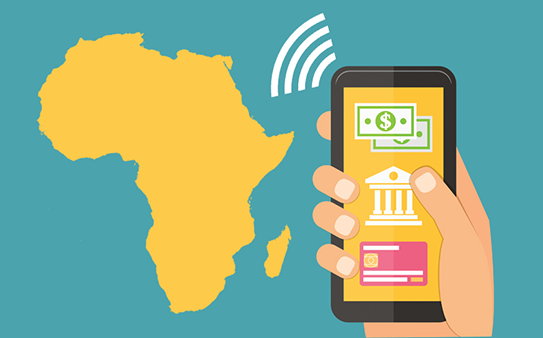A series exploring the ‘how and why’ different payment cultures evolved around the world
Last month, in Part 1 of the series, we introduced the intriguing and complex topic of a ‘payment culture’. We examined factors that influence payments across regions, and discussed why the US was reliant on credit cards, while China (quickly) adopted mobile social platforms to make payments.
We looked at 4 forces that help drive a payment culture, and how they influenced both the US and China:
- Self: Individuals are influenced by the collective, but are still distinct in their preferences.
- Education: The extent to which people are educated on new types of technologies.
- Culture: The socio-economic culture of a country, or region.
- Options: A bit of the “chicken or the egg” dilemma, as the payment options (or lack thereof) can influence the culture.
In Part 1, we determined that the desire for innovation is arguably one of the largest influences on a payment culture; in Part 2 we will answer the question: What happens when a payment culture is driven by a lack of options? As the old proverb goes, “necessity is the mother of invention”, which is why we will hold a magnifying glass up to one of the most fascinating evolutionary changes in payments to date:
East Africa
The topic of financial inclusion is a popular one today, as it is a large piece of the puzzle in reducing global poverty and increasing economic and social mobility. Current estimates claim nearly 1.7 billion people around the world still do not have a bank account. How can we empower people who lack basic access to banking services? This is a very difficult question to answer, as many often live in rural areas, and lack access to transportation, the internet, and more often than not, can’t afford the fees that come with a bank account–even if they did have access.
However, having so little can force people to be creative in finding a solution to their problem. As far back as 2002, researchers in Africa discovered that people were using airtime for cellular devices as a proxy for currency, transferring credits between themselves in return for minutes. This new form of bartering seemed to have sparked the idea for mobile payments.
To clarify, this type of mobile payment is very different than what North Americans and Chinese users are accustomed to. This type of mobile payment does not require access to the internet, and certainly doesn’t require a smartphone. Users do not need to download a social media app, or connect their credit card to an Apple mobile wallet. This form of mobile payment simply requires a basic cell phone, with basic cell service. It is a solution that is simultaneously advanced and simple in its execution. Using this form of mobile payment technology, users deposit money into an account stored on their cell phones, and send payments or transfers using a PIN-secured SMS text message to other users. Users are charged a small fee for sending and withdrawing money, but the fees are much smaller than those charged by traditional banks for maintaining bank accounts and using bank services. Interestingly, the majority of Africans, including those living in the poorest sub-Saharan African countries, have access to a mobile phone, with mobile phones being more common in sub-Saharan Africa than electricity!
Kenya
The most successful example of this form of mobile payment is in Kenya, where the company M-Pesa (pesa is Swahili for money), owned by Vodafone, has helped revolutionize payments in the country. In fact, the use of M-pesa has become so widespread in Kenya that it processes over 1.7-billiontransactions a year, which accounts for more than 50% of Kenya’s GDP value. This form of payment has been critical in aiding the fight against financial exclusion, empowering those who need it most. Between 2008 and 2011 alone, the percentage of people living on less than $1.25 a day who used M-Pesa rose from below 20% to 72%, with one estimate claiming the M-Pesa mobile-money system alone lifted about 2% of Kenyan households out of poverty between 2008 and 2014.
As amazing as mobile payments has been for financial inclusion in Kenya, the technology is not all about the reduction of poverty. The University of Nairobi’s Tonny Omwansa, who is writing a book on mobile money, was quoted as saying, “Besides accessibility, most banked people in urban Kenya prefer mobile money for its convenience and speed”. “Keep in mind that Internet penetration and use of e-banking and e-commerce is low, so mobile money just fits the bill.”
Simeon Oriko, mobile technologist at m:lab East Africa, a mobile development lab in Kenya, actually described the popularity of mobile cash in Africa as a cultural phenomenon.
“Mobile money for me is a cultural issue,” he said. “It has very little to do with the technology itself. Mobile money channels in Kenya generally flow within family units. Secondly, mobile money offered a way for the unbanked to bank their money in a way that’s personal and that fits right within their lifestyle.”
Zimbabwe
Even with the success of mobile payments in Kenya, there, cash is still ubiquitous. However, there is at least one country in Africa where cash is a scarce commodity, which introduced a new use case for mobile payments: Zimbabwe. Zimbabwe has been suffering from hyperinflation. Hyperinflation is when the cost of goods rises at such a fast rate, the currency becomes close to worthless. This may be caused by various factors, but is an extreme situation that can make even basic necessities completely unaffordable. Unfortunately, a similar situation is occurring in Venezuela today.
After attempting, unsuccessfully, to deal with hyperinflation, the Zimbabwe government decided to abandon its currency in 2009, replacing it with the US Dollar, due to its stability and mass appeal. This however, created a problem where there was an extreme shortage of bank notes. There were so few US dollars in circulation that Zimbabweans were queuing for hours on end just to withdraw the low daily maximum from their bank accounts. Often, they could not receive change at stores and restaurants.
In response to the shortage of bank notes, the Zimbabwe Central Bank grossly reduced the cost of electronic transactions, and financial institutions and mobile operators quickly improved (or created) digital solutions.
Dr. Lance Mambondiani, CEO of Steward Bank said, “Previously only about 20% of transactions were being done electronically, and the remaining 80% was cash…but by 2017 the surge in electronic transactions saw that share rise to 80%, while cash just accounted for 20% of transactions. It was driven by necessity, there was no other option.”
Moving Forward
“If necessity is the mother of invention, discontent is the father of progress”
-David Rockefeller
Payments are about more than technology, they’re about people, and that sentiment continues to ring true when analyzing the evolution that’s underway in Africa. The circumstances that have driven Zimbabwe’s fast-paced flight from cash are unusual, but reflect the huge growth potential of cash-free transactions in developing markets. The Kenya/mobile money model is already being replicated around the world. Ant Financial in South East Asia, Paytm in India, Mynt in the Philippines, bKash in Bangladesh, easyPaisa in Pakistan, are all examples of developing countries leveraging a similar model to provide their people more options and greater accessibility to financial services. It is a reminder that many parts of the world are still solving for complex payment challenges, where convenience is secondary to sustenance. Thus, in order to continue this evolution, payment technology companies, like nanopay, must continue to use empathy as a source of inspiration, and view problems through the eyes of those whose lives they are trying to improve.





